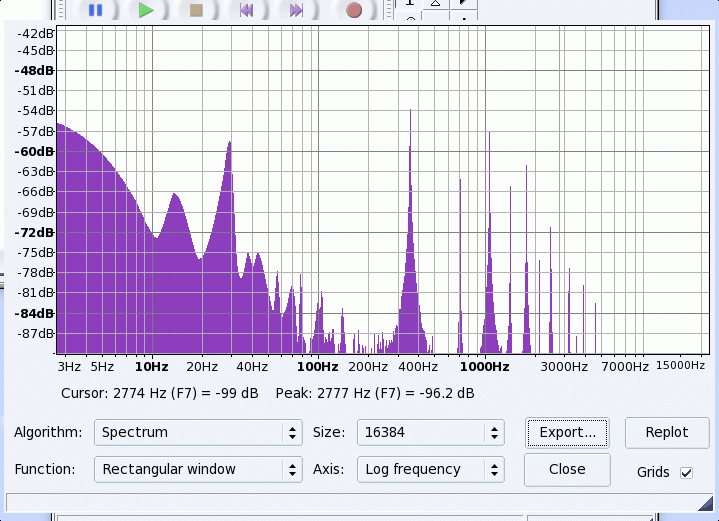

These are the Spectra of those same three notes from the oboe, one from the lowest notes on the oboe(C4),

one from the mid (F4), Note that this particular note is almost like a clarinet note, in that the even harmonics are weaker than the odd harmonics.

and one from the highest(B5)
 The junk below about 100 Hz is all noise-- either from the room, or from the
electronics in the computer or noise from the computer itself.
The junk below about 100 Hz is all noise-- either from the room, or from the
electronics in the computer or noise from the computer itself.
The absolute amplitude in dB is simply how far below the loudest sound that the microphone could record without clipping. It is the relative amplitudes of the notes that are important.
As explained in the notes on the Fourier transform in the course notes, the widths of the peaks arise out of the finite time that the note is recorded and the fact that the recording time is not an exact multiple of the period of the note. Both of these effect broaden out the peak.
The number of samples 16384. Since there are 44100 samples per second, this is about .4 seconds. The resolution -- the minimum frequency that can be sample is one whose period is this sample time, so the minimum frequency is about 2.5Hz. The smooth curve at low frequencies is an interpolation by the program and cannot be trusted (eg below about 50Hz)
This page and all links therefrom are copyright W. G. Unruh. They may be reproduced for non-commercial purposes but this notice must be retained in any copy. Any changes must be clearly indicated as such.
The image files were created under Mandriva Linux using audacity and xv.